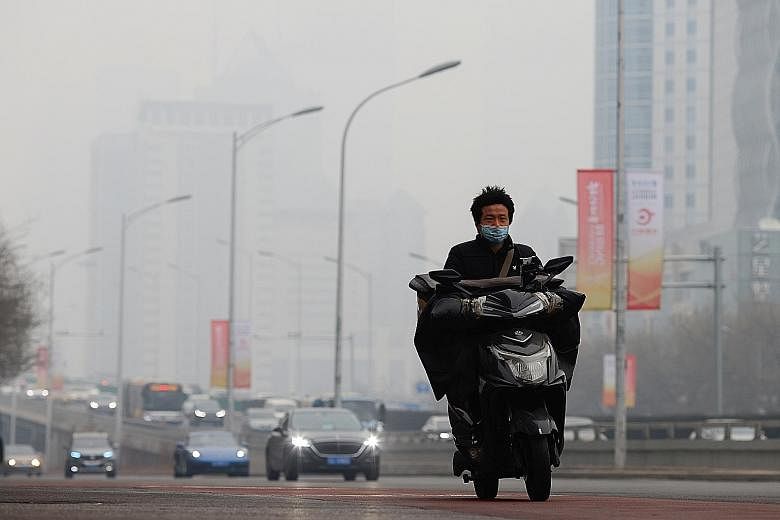BEIJING • China has promised to dedicate its new five-year plan to tackling climate change, but concerns about economic growth and energy security are expected to temper the country's green ambitions.
Vice-Premier Han Zheng said in October that the 2021-2025 plan, due to be delivered to Parliament next month, would be "dedicated to addressing climate change" and "focus on the country's new vision" to bring emissions to a peak before 2030 and achieve "carbon neutrality" by 2060.
But experts said China is still likely to give its regions leeway to focus on growth and build new coal-fired power stations to head off energy shortages.
"I think it's possible that policymakers will set less ambitious targets on energy and coal consumption (in the five-year plan) due to concerns about energy security," said Mr Zhang Shuwei of the Draworld Energy Research Centre, a think-tank.
The ruling Communist Party's Politburo said in November that the five-year plan should promote low-carbon energy and support efforts to quickly bring emissions to a peak in some regions.
Provincial-level plans also include commitments to scale up renewables and promote carbon trading, while a policy document published on Monday also said China will upgrade its energy sector by 2025.
New targets to raise renewable capacity and cut the amount of carbon produced per unit of gross domestic product are also expected, along with an overall energy consumption cap.
China's air quality targets for this year will also be set at a slightly higher level than last year's average, an official said yesterday, after pollution fell significantly in the early part of last year due to coronavirus-related lockdowns.
China will seek to keep average levels of small, hazardous airborne particles known as PM2.5 at 34.5 micrograms per cubic metre over the course of this year, the environment ministry added. That is slightly higher than the average of 33 micrograms registered in 337 monitored cities over the whole of 2020, with capital Beijing averaging 38 micrograms last year.
"This year's target (for achieving good air quality) looks like it is a little lower than the 2020 figure, but if you eliminate the impact of the pandemic on air quality, the PM2.5 rate would have been 35 micrograms (last year)," said Mr Liu Bingjiang, head of the air pollution unit at the Ministry of Ecology and Environment, speaking at a regular briefing.
China's national "interim" air quality standard is currently 35 micrograms per cubic metre, well above the World Health Organisation's recommendation for average annual levels of no more than 10 micrograms.
REUTERS

